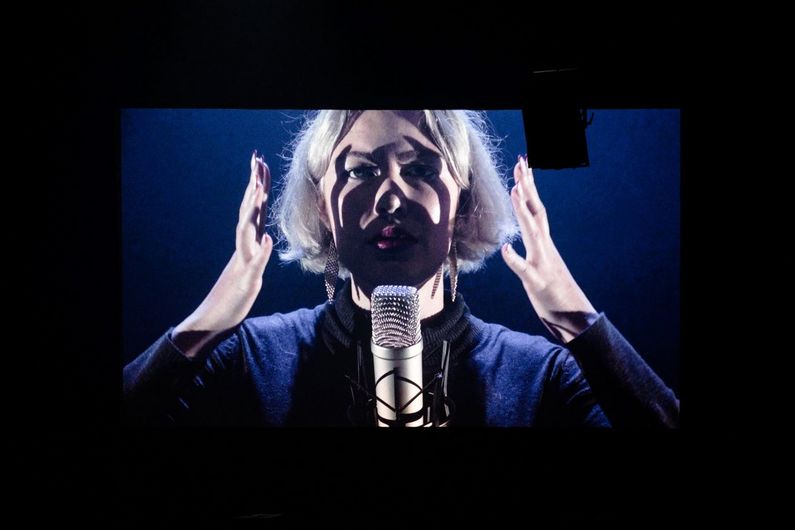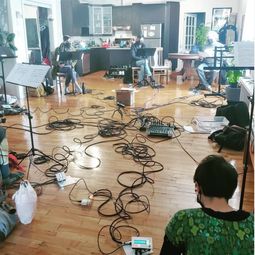Erin Gee unites mind and body through music
- UdeMNouvelles
03/25/2022
- Béatrice St-Cyr-Leroux
An artist and UdeM doctoral student in music explores how emotional and physical responses and feminist theory can be translated into musical composition.
Erin Gee is an artist and composer whose work transcends listening pleasure. She wants the audience to feel her music, to internalize it—emotionally and also physically.
Her art lies at the intersection of ASMR, biofeedback, digital media and electroacoustics. Inspired by the human voice, it draws the listener’s body into the listening experience.
Internalizing the music
Gee, a doctoral student in composition and sound design in UdeM’s Faculty of Music, is interested in emotional and physical responses to music, and has a particular fondness for Autonomous Sensory Meridian Response (ASMR), a pleasant tingling sensation that can be induced by digital audiovisual stimuli.
Those interests have also led her to use biosensors to measure involuntary physiological reactions—sweating, heart rate, brain activity, etc.—to an artistic experience, and from there to apply biofeedback techniques that use measurements of organic functions to better understand the body’s workings.
“ASMR and biofeedback have pointed me towards a new way to produce work, a more material way,” said Gee. “People often make a sharp distinction between mind and body. Why couldn’t listening to music be an experience that links the two? Why not value the physical sensations as much as the emotions? Using biosensors, I can determine with precision whether listeners are affected by the music, by letting their autonomic nervous system do the talking.”
A feminist plea
The production of electroacoustic works using biofeedback has long been the preserve of men, and white men at that, Gee pointed out. With her work, she aims to bring more diversity to the field.
“There are still very few examples in electroacoustic works and scholarship that explore feminist ideas or are produced by members of culturally diverse groups,” she said. “My feminism springs from my own life, from my reality of being born into a body that comes with privilege and ‘anti-privilege.’ And I think art is best served by our real-life experience.”
To find out more about Gee’s work, check out her YouTube channel. She considers We As Waves to be the piece that best expresses her artistic vision.














